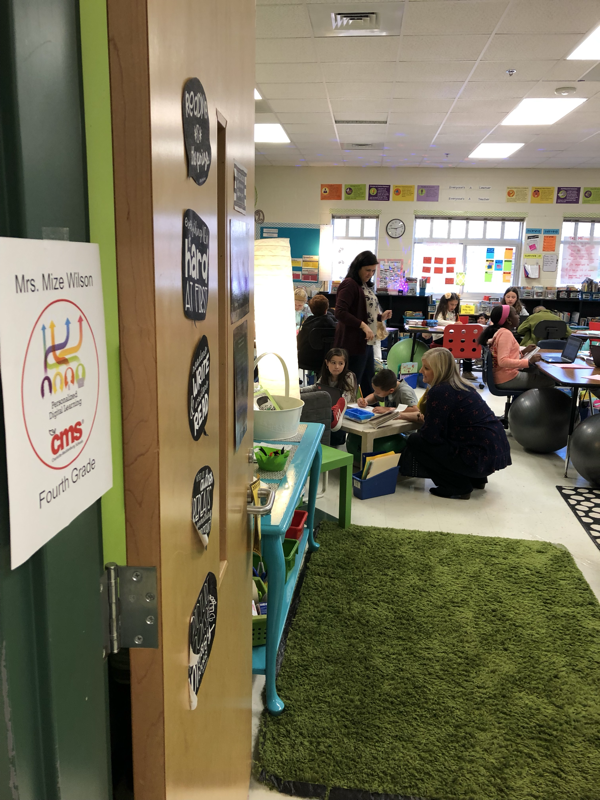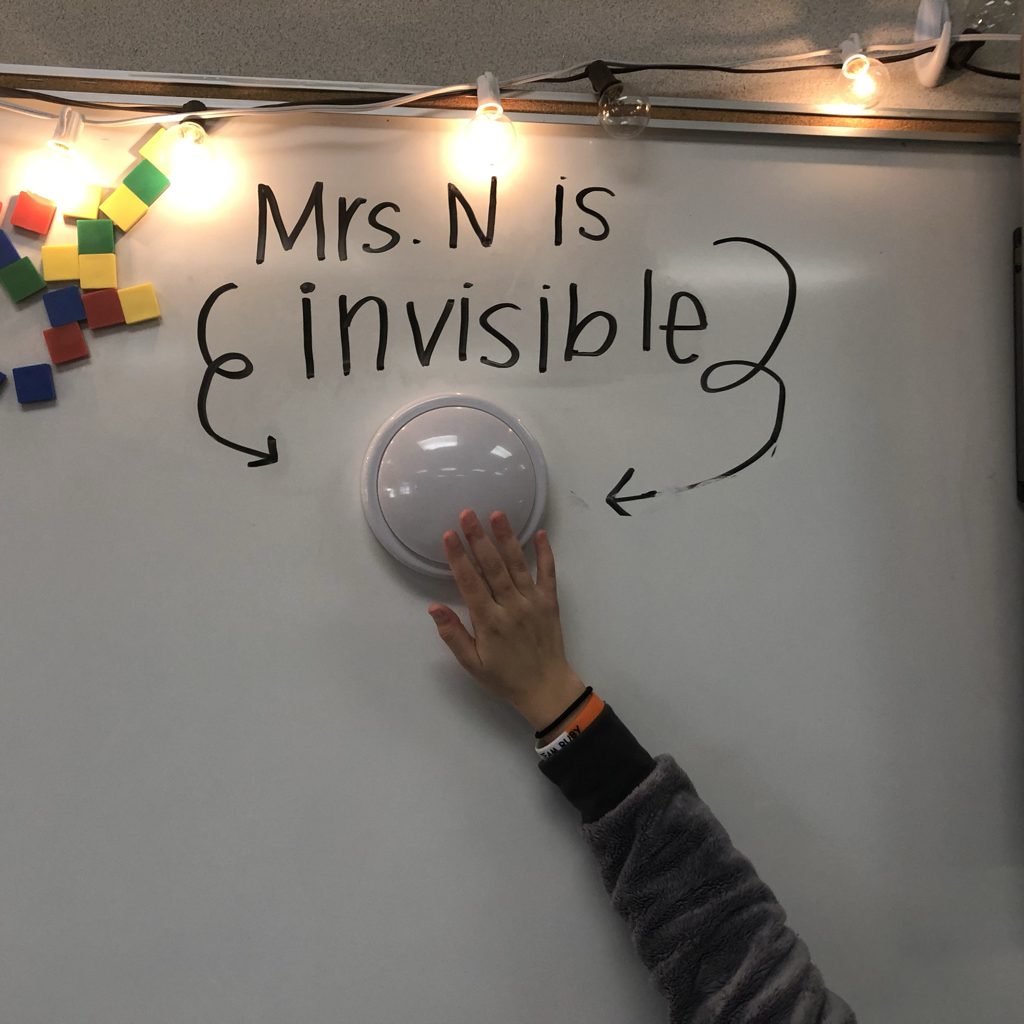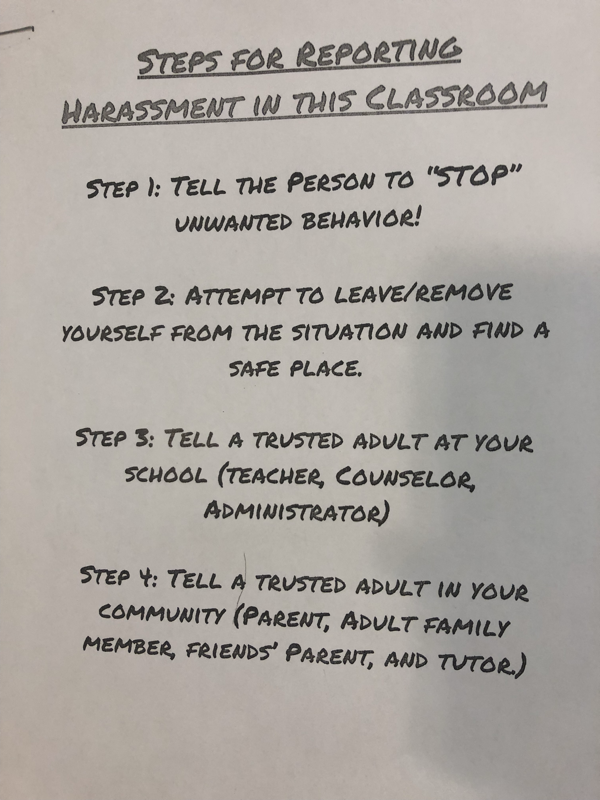|
This morning I had the honor of being led on a PDL (personalized digital learning) tour by wonderful students at JV Washam who showed me their own classroom routines. (I can't recommend student-led tours enough!) Each teacher I saw personalizes for their students according to their own teaching strengths as well as the needs of their students at that time. They model growth mindset for their students. One student pointed to the wall and said "my teacher hung those posters in the wrong order, but then when she realized her mistake we fixed it." I loved that the teacher modeled for her class that mistakes are part of learning and growing and involved them in fixing the mistake together. To begin making the most of our digital devices to personalize learning at Piedmont, here is a procedure to follow, based on what I saw and learned:
Washam teachers all said that Switching to This method ELIMINATED many behavior problems in their classrooms.Here are some photos with the takeaways geared toward things you can adapt for your classroom from how they do PDL at JV Washam. Don't be put off by the elementary nature of some of these images. They can be adapted to appeal to older students easily. Setting the stage: Atmosphere Plus Procedural,Social, and emotional learningSocial and emotional learning is essential and continuous. If students are to be trusted they must first be taught what to do and not do and agree to that. Students want more control and choice so it's an easy bargain for them. Click on any image to expand it Included are images of brain breaks, "morning meeting" requests, emotional self regulation, rules for sitting in a PL Choice classroom, etc. Any time you spend on this you will get back in greater buy-in and more efficient class the rest of the year. Tools of Personalizing Content- Playlists, Pathways, PLayways...Below a student is creating a Flipgrid video to teach her classmates. This student's tablemate admitted that her friend was very nervous before recording so she was writing out her script first to make sure she told all she knew. Others in the class chose to show mastery with a dfferent task from a choice board. Math: Mystery Picture is a self correcting activity. Students access it via the teacher's google classroom and as they work the 20 problems, pieces of the picture appear with each correct answer. The teacher bought it on TPT. The teachers say that highly engaging tasks, whether they be practice or creation are essential. Below are images of the tools used to personalize: choice boards, Google Classrom instructions, hyperlinked google docs, handouts, slideshows, and such. Each classroom used different tools. To relieve teacher stress, the admin did not do any walkthroughs first quarter, second quarter they ONLY gave compliments, and then third quarter they moved into coaching and feedback. That way teachers knew they had a whole quarter to make mistakes and tweak the experience. One teacher said she felt a little bad like she was using the kids as guinea pigs but that she could not be happier with the results. What I think is important to learn about that is that all growth and improvement has an element of risk. If you want to improve the learning experience, experimentation is unavoidable. Refusing to do it because of fear ends up hurting the students more than trying and needing to regroup. Related posts:
http://piedmontpd.weebly.com/piedmont-pd/learning-from-elementary-school http://piedmontpd.weebly.com/piedmont-pd/classroomingredients http://piedmontpd.weebly.com/piedmont-pd/automated-personalization http://piedmontpd.weebly.com/lesson-ideas/sites-for-your-students
0 Comments
|
AuthorThis blog is a compendium of District and Piedmont -specific PD opportunities, trainings, and notes. Archives
November 2019
Categories
All
|
Photos from docoverachiever, memebinge, Ivy Dawned, www.ilkkajukarainen.fi, Muffet, Diana Boucino, Stephane .Jaspert, sanazmy97, kevin dooley, Mike Licht, NotionsCapital.com, studiohzwei, The Daring Librarian, bobbi vie, madnzany, lisibo, Tjeerd, Nicola since 1972, Brett Jordan, ~Matt LightJam {Mattia Merlo}, denise carbonell, The Lex Talionis, Toolstotal, liverpoolhls, Ninara





























 RSS Feed
RSS Feed
